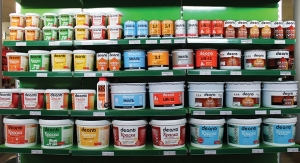02.02.18
Paints are prepared of three components a carrier agent, pigment and binder. A pigment also known as tint is the color whereas the binder is normally referred as resin, which is thick, adhesive hydrocarbon liquid that hardens when out in the open. A carrier agent concerns with the solution which the resin is suspended in and maintains the binder in liquid form till the time it is applied, at that time it either chemically bonds or evaporates from the surface of the car.
Automotive paint binders are normally one of the three chemical compounds- urethane, enamel or lacquer. Lacquer is due to the regulatory actions by the government is restrained to control the pollution, despite the fact that it is easy to spray, and dries to an even and smooth glossy show-car finishing.
Automotive paint is paint used on various forms of vehicle type, heavy commercial vehicles, light commercial vehicles, premium passenger cars, luxury passenger cars, compact passenger cars and mid-sized passenger cars for both decoration and protection purposes. Enamel paint is at present is the most broadly used paint in favor of the reasons including lessening paint's ecological impact.
The paint base is mainly of two types, waterborne and solvent-borne. The recent automobile paints are applied in various layers, with approximately 100 µm(0.1mm) of overall thickness. Clearcoat, Basecoat, Primer and electrocoat are types of coating. A paint application involves primer and preparation steps to make sure appropriate application of paint. After the primer paint, a base coat is applied, followed by a clear coat of paint may possibly be applied which appears as a transparent and glossy coating. During the process, the clearcoat sheet should be competent enough to endure UV light. The final finish is accomplished that can give an appearance of pearlescent, solid, metallic and other such as matte finish, etc.
The worldwide sales of automotive paint are increasing as a result of rising vehicle production in addition to the robust growth of the automotive sector in countries like South Korea, India, Mexico, China and Brazil. Additionally, rising trends of automotive refurbishing and restorations are anticipated to reflect constructively with regards to the sales in the aftermarket of the automotive paints. With reference to Persistence Market Research’s recent analysis, fast implementation of thermal spray technologies and highly developed powder coating are anticipated to increase the sales of the worldwide automotive paint market. The overall market is estimated to touch a figure of approximately $ 11966.1 million by the end of 2022 and is projected to grow at a CAGR of 5.7 percent throughout the projection period, 2017-2022.
With the rise in environmental concerns, the manufacturing companies are shifting their focus towards the development of products which are non-toxic and eco-friendly. In addition, environmental bodies and government organizations are supporting the employment of technologies which will help in reducing the emission levels.
For more information, click here.
Automotive paint binders are normally one of the three chemical compounds- urethane, enamel or lacquer. Lacquer is due to the regulatory actions by the government is restrained to control the pollution, despite the fact that it is easy to spray, and dries to an even and smooth glossy show-car finishing.
Automotive paint is paint used on various forms of vehicle type, heavy commercial vehicles, light commercial vehicles, premium passenger cars, luxury passenger cars, compact passenger cars and mid-sized passenger cars for both decoration and protection purposes. Enamel paint is at present is the most broadly used paint in favor of the reasons including lessening paint's ecological impact.
The paint base is mainly of two types, waterborne and solvent-borne. The recent automobile paints are applied in various layers, with approximately 100 µm(0.1mm) of overall thickness. Clearcoat, Basecoat, Primer and electrocoat are types of coating. A paint application involves primer and preparation steps to make sure appropriate application of paint. After the primer paint, a base coat is applied, followed by a clear coat of paint may possibly be applied which appears as a transparent and glossy coating. During the process, the clearcoat sheet should be competent enough to endure UV light. The final finish is accomplished that can give an appearance of pearlescent, solid, metallic and other such as matte finish, etc.
The worldwide sales of automotive paint are increasing as a result of rising vehicle production in addition to the robust growth of the automotive sector in countries like South Korea, India, Mexico, China and Brazil. Additionally, rising trends of automotive refurbishing and restorations are anticipated to reflect constructively with regards to the sales in the aftermarket of the automotive paints. With reference to Persistence Market Research’s recent analysis, fast implementation of thermal spray technologies and highly developed powder coating are anticipated to increase the sales of the worldwide automotive paint market. The overall market is estimated to touch a figure of approximately $ 11966.1 million by the end of 2022 and is projected to grow at a CAGR of 5.7 percent throughout the projection period, 2017-2022.
With the rise in environmental concerns, the manufacturing companies are shifting their focus towards the development of products which are non-toxic and eco-friendly. In addition, environmental bodies and government organizations are supporting the employment of technologies which will help in reducing the emission levels.
For more information, click here.























